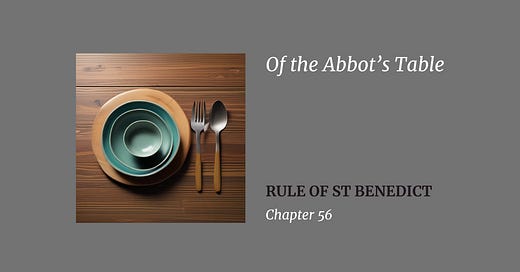Welcome to new subscribers! Each week I post my translation of a chapter of the Rule of St Benedict, with comments from the monastic fathers or my own observations.
Text
Let the table of the Abbot always be with guests and pilgrims.
Mensa Abbatis cum hospitibus et peregrinis sit semper.
However, whenever there are few guests, let it be in his power to call …
Keep reading with a 7-day free trial
Subscribe to Incola ego sum in terra to keep reading this post and get 7 days of free access to the full post archives.



